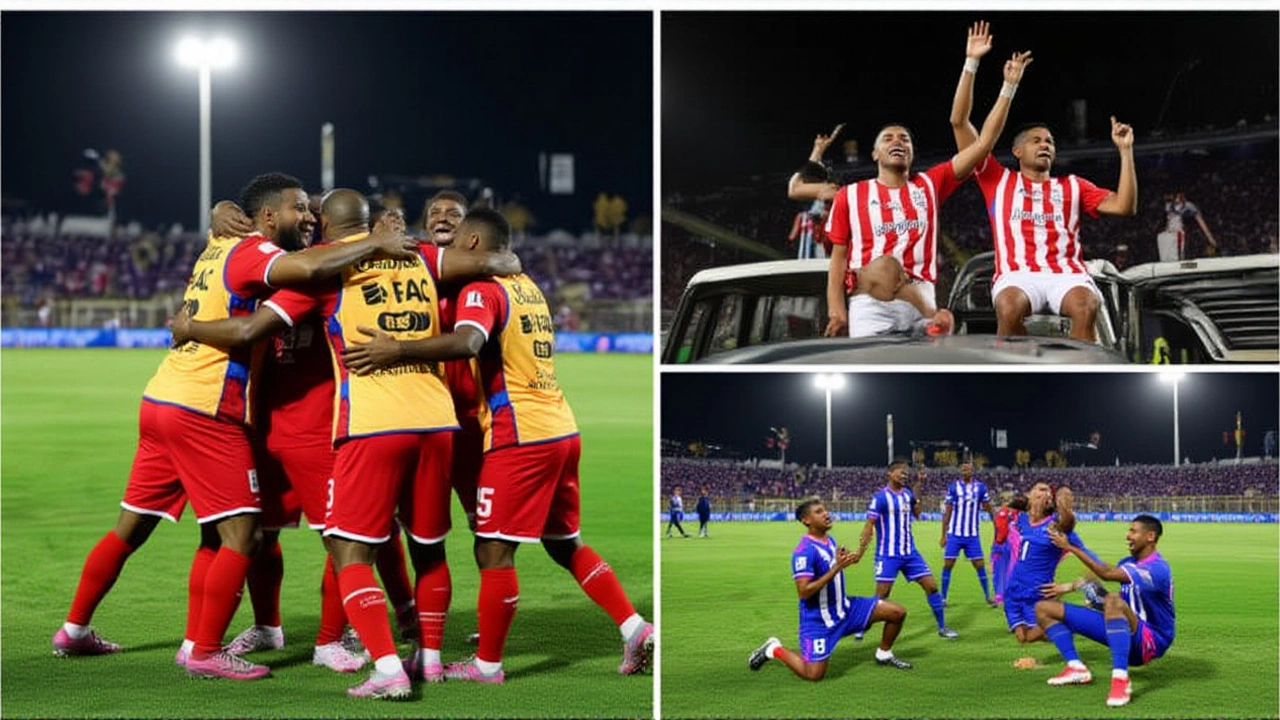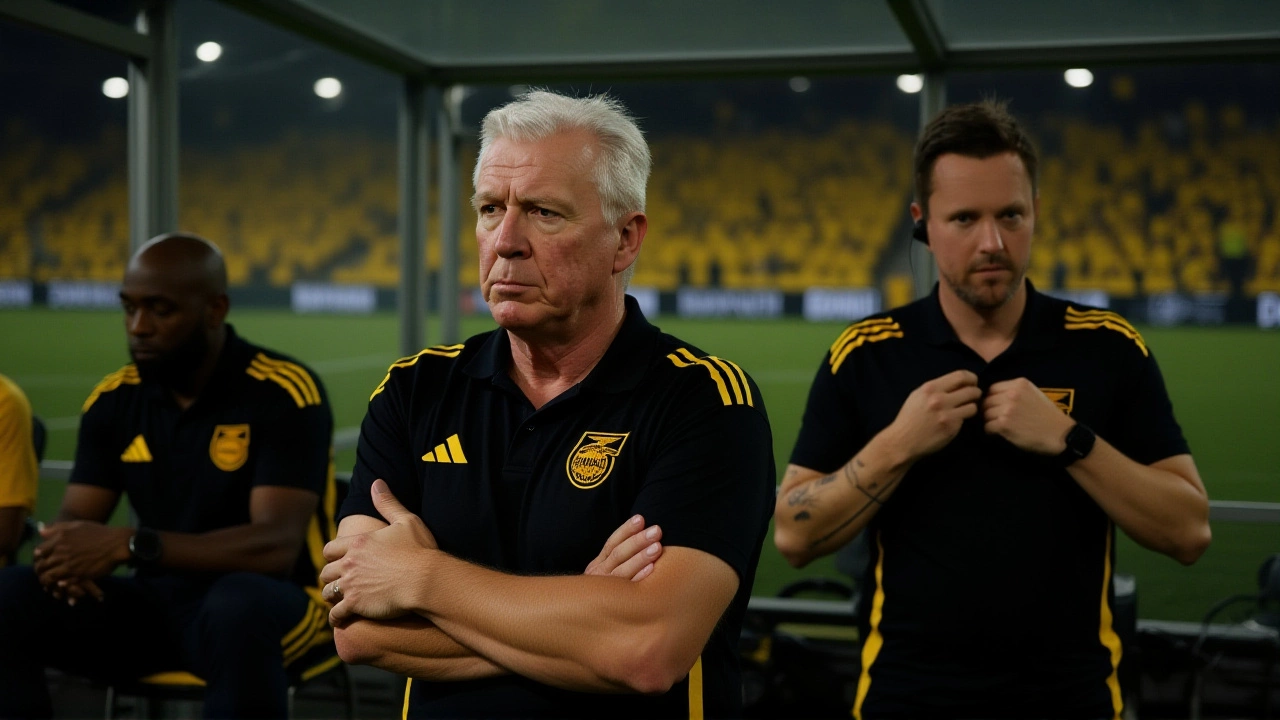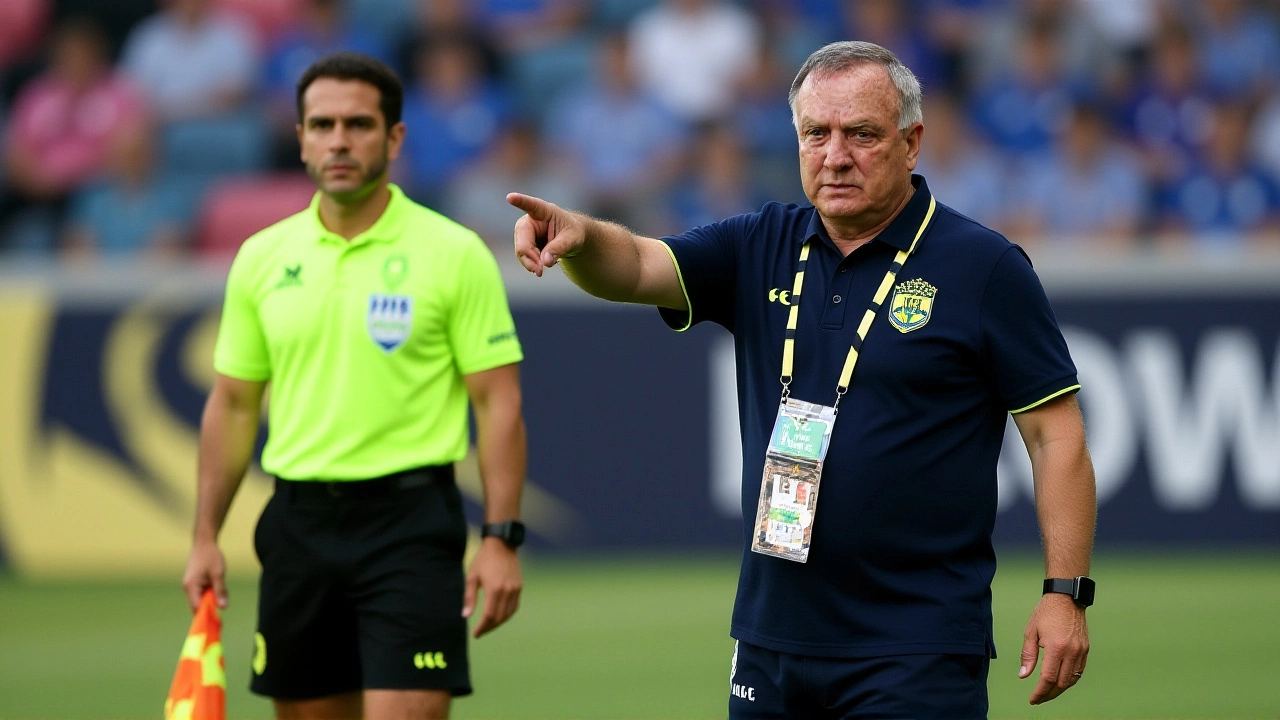Panama, Haiti, and Curaçao Qualify for 2026 World Cup in Historic CONCACAF Night
 Nov, 21 2025
Nov, 21 2025
On a night that will echo through Caribbean football history, Panama, Haiti, and Curaçao punched their tickets to the 2026 FIFA World Cup — not by accident, not by luck, but by sheer will. It happened on Matchday 6 of CONCACAF qualifying, in front of roaring crowds and tens of thousands watching from living rooms across the region. The twist? The United States, Mexico, and Canada weren’t even in the race. As joint hosts, they auto-qualified, leaving the remaining spots wide open — and the Caribbean, long seen as the underdog, seized its moment.
A Night That Changed the Game
For decades, CONCACAF qualifying was a two-horse race: the U.S. and Mexico, with Canada occasionally tagging along. The Caribbean islands? They were the hopefuls, the dark horses, the teams that made the journey to the qualifiers but rarely made it to the final destination. Until now.
On this night, Haiti did the unthinkable. Hosting Honduras in Port-au-Prince, they didn’t just win — they outlasted a team that had dominated them for generations. The final score? A 2-1 victory. But it wasn’t just the goal that mattered. It was the goal difference. With both teams needing a win to stay alive, Haiti’s margin of victory gave them a ‘plus two swing’ over Honduras, a term the Golazo Show presenter used repeatedly — and correctly — to describe the razor-thin tiebreaker that sent Haiti through. Honduras, who hadn’t beaten Haiti at home since 2004 (a 5-2 win with goals from David Suaso, Rambo Leon, and Amado Gada), were left stunned.
Curaçao’s Breakthrough
Meanwhile, in Group B, Curaçao — often called ‘Kurissau’ by the Golazo Show’s commentator — faced Jamaica in a winner-takes-all clash. The stakes? One team goes to the World Cup. The other goes home. Curaçao, with a squad built on Dutch-trained talent and a fierce home-field advantage in Willemstad, held firm. A 1-0 win, sealed by a late header from striker Stefano Rijssel, sent the island into pandemonium. It was their first-ever direct World Cup qualification. Ever. Not a playoff. Not a second chance. Straight to the finals.
And then there was Panama. In Group A, they didn’t need a miracle. Just a clean 2-0 win over El Salvador. But the symbolism was massive. Panama, a consistent CONCACAF contender, had been the region’s steady hand for years. Now, they weren’t just surviving — they were leading. Their qualification meant Central America still had representation, but it also meant the Caribbean had broken through — twice.

Why This Matters
Before this night, no Caribbean nation had ever qualified directly for the World Cup under the current CONCACAF format. Trinidad and Tobago came close in 2006. Jamaica nearly made it in 2018. But Haiti and Curaçao? They didn’t just get close. They crossed the line. And they did it without the shadow of the big three looming over them.
The numbers tell the story. Haiti’s national team has 11 wins and four losses in World Cup qualifying history. Their last four home games against Honduras? Unbeaten. Curaçao, despite a population of just 160,000, has climbed to 72nd in the FIFA rankings — higher than Jamaica and Honduras. Panama, meanwhile, sits at 57th, a testament to their consistency.
And here’s the kicker: because of their rankings, both playoff-bound teams — Jamaica and Honduras — will likely only need to win one match in the interconfederation playoff in March 2026. FIFA’s new format means lower-ranked teams get a bye to the final playoff round. That’s huge. For Haiti and Curaçao, it means their qualification isn’t just a moment — it’s a blueprint.
What Comes Next
The two teams left fighting for the final CONCACAF spot — Jamaica and Honduras — will meet in a single-leg interconfederation playoff in March 2026, likely against a team from CONMEBOL or OFC. The winner gets one of the last three spots in the 2026 World Cup. But for now, the spotlight belongs to the three who made it.
The Haitian Football Federation in Port-au-Prince, the Curaçao Football Federation in Willemstad, and the Panamanian Football Federation in Panama City are already planning parades, public holidays, and youth academies. This isn’t just about one tournament. It’s about changing the narrative.

The Bigger Picture
For years, Caribbean football was dismissed as a development zone — good for talent exports, not tournament success. But this night proves that when the system opens up, the region can compete. The absence of the big three wasn’t a disadvantage — it was an opportunity. And Haiti, Curaçao, and Panama didn’t just take it. They owned it.
Imagine a future where a 14-year-old in Cap-Haïtien doesn’t dream of playing for PSG or Manchester United — but for Haiti at the World Cup. Where a kid in Willemstad sees Curaçao’s captain on the TV and thinks, ‘That’s me in four years.’ That’s the legacy of this night.
Frequently Asked Questions
How did Haiti qualify over Honduras despite both teams winning?
Haiti and Honduras both won their final matches, but Haiti’s 2-1 victory gave them a better goal difference than Honduras’s 2-0 win. The tiebreaker was a ‘plus two swing’ — Haiti’s net goal difference was +3, while Honduras’s was +1. That two-goal margin was enough to push Haiti ahead in Group C and secure direct qualification.
Why is this the most historic night for Caribbean football?
For the first time ever, two Caribbean nations — Haiti and Curaçao — earned direct World Cup qualification under the current CONCACAF format. No Caribbean team had done this before, even with Trinidad and Tobago’s 2006 run. This isn’t just progress — it’s a breakthrough that redefines what’s possible for smaller footballing nations.
What role did the U.S., Mexico, and Canada play in this outcome?
As co-hosts of the 2026 World Cup, they automatically qualified, removing them from the qualifying race. That opened up three direct spots that were previously dominated by those three teams. Without them, the field was more open — and Caribbean teams, long underestimated, seized the chance.
What’s the interconfederation playoff, and who’s playing in it?
The two remaining teams — Jamaica and Honduras — will face off in a single-match playoff in March 2026. The winner will advance to a final interconfederation playoff against a team from CONMEBOL, OFC, or AFC. Due to their FIFA rankings, the winner will likely only need to win one game to reach the World Cup, thanks to FIFA’s new playoff structure.
Can Haiti or Curaçao actually compete at the World Cup?
Absolutely. Haiti has beaten Brazil and Argentina in friendlies. Curaçao has drawn with European sides like Norway. Both have experienced players in European leagues — like Curaçao’s J. L. S. J. J. van der Veen and Haiti’s Jean-Jacques Pierre. They’re not underdogs anymore. They’re contenders.
What does this mean for youth football in the Caribbean?
This qualification is a game-changer for investment. National federations are already announcing new academies, scholarships, and infrastructure projects. For the first time, kids in the Caribbean can realistically dream of playing in a World Cup — not just watching it. That’s the real win.